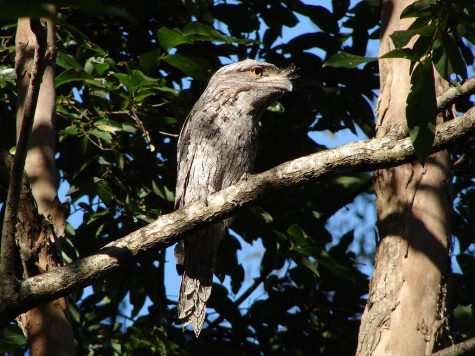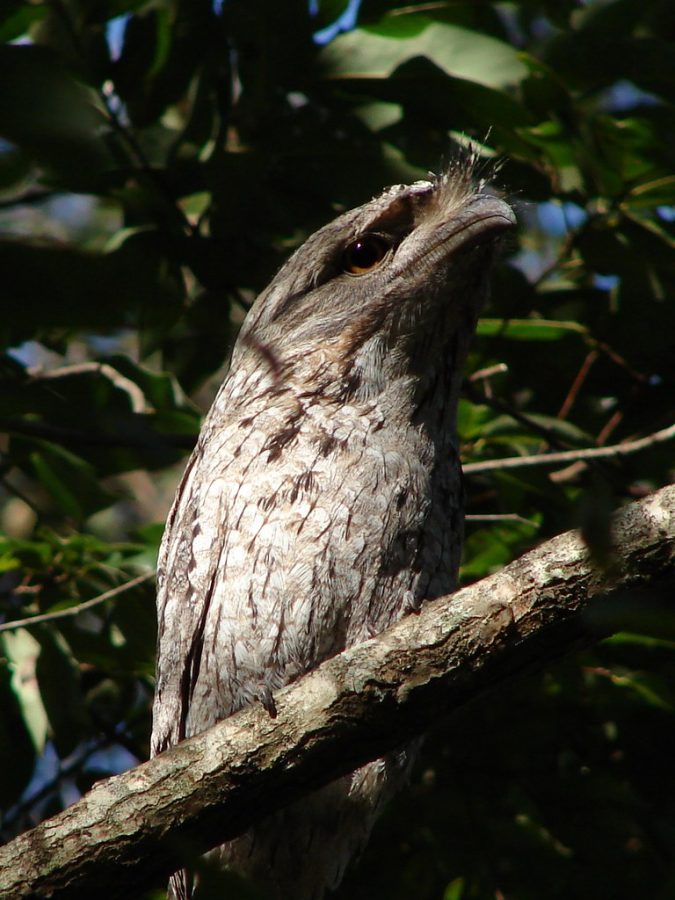Frogmouths: Nocturnal Masters of Camouflage
Often mistaken to be owls, frogmouths have wide eyes to help them see in the dark. However, unlike owls, frogmouths have broad, hooked beaks and weak feet and legs. Their big beaks cause Frogmouths to look strange and somewhat silly compared to other birds.
Frogmouths can be found throughout southeast Asia and Australia, often living in forests and sometimes rural and urban areas. Their diet typically consists of insects, small mice and lizards, and occasionally fruit or berries. Frogmouths use their large beak to harm prey or slam them onto stones for easier consumption. Frogmouths also have many other adaptations to keep them safe and help them catch prey.

For example, Frogmouths often have grey, brown, or slightly reddish feathers, which helps them blend into their surroundings and environment. Frogmouths use camouflage to patiently wait for prey or hide from predators such as foxes, dogs, or cats. Additionally, Frogmouths are nocturnal creatures, meaning they sleep through the day and are active at night (much like owls). Since Frogmouths don’t have sharp talons to protect themselves from threats, their smartly colored plumage helps them stay unnoticed among their habitats of trees and branches while they sleep through the day. If threatened, then Frogmouths will either fly away, or they’ll open their large beaks in hopes to intimidate predators.
Related Articles:
https://animals.sandiegozoo.org/animals/tawny-frogmouth
https://www.britannica.com/animal/frogmouth
https://australian.museum/learn/animals/birds/tawny-frogmouth/















